Review: Doctor Who, “The Robot Revolution” | Season 2, Episode 1
An overstuffed episode introduces a brand-new companion and a whole bunch of mysteries
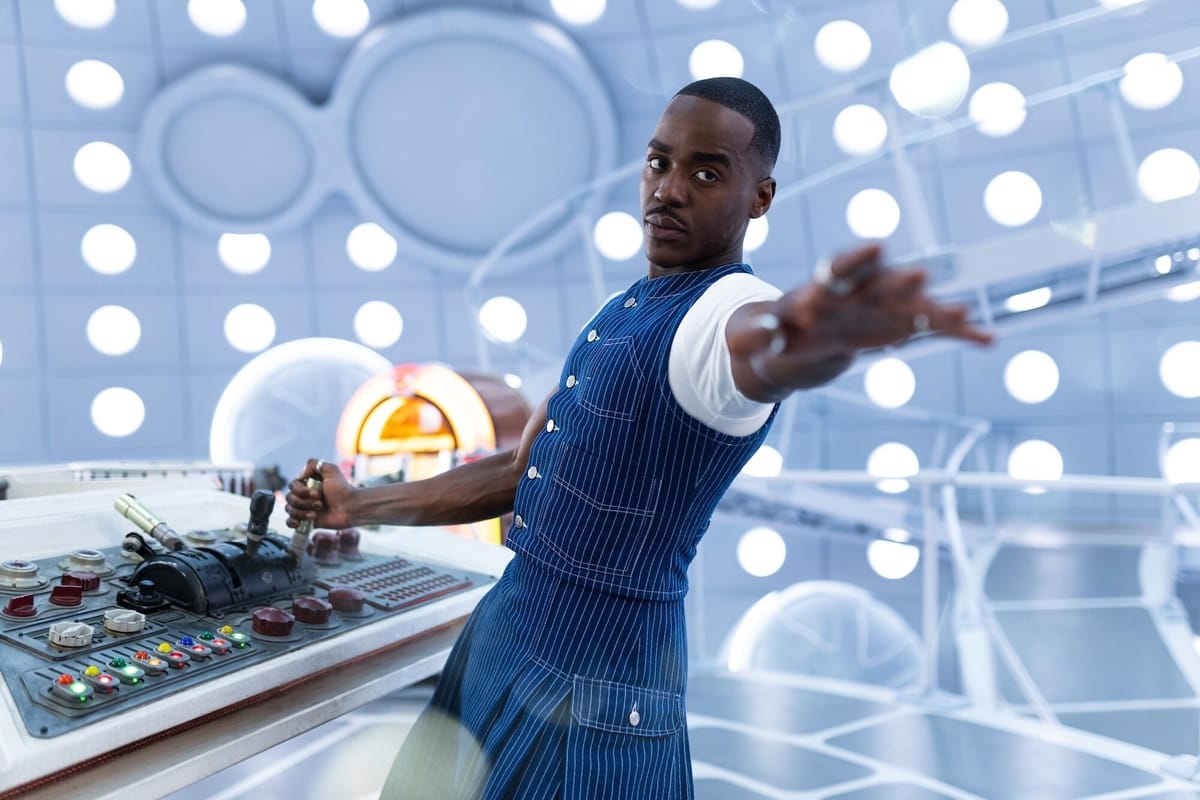
Welcome back to Episodic Medium’s coverage of Doctor Who, which we’re going to start referring to by Disney’s season numbers because they’ve actually got two fully separate IMDB pages now. As always, this first review is free for all, but to keep up with Caroline’s reviews of “Season Two” of the Ncuti Gatwa era, become a paid subscriber.
One of the central tenants of Doctor Who is that the Doctor is regularly swapping out old companions for new ones, but that happens less often than you might think. In fact, you have to go all the way back to Bill Potts’ intro in 2017 to find a companion who didn’t launch a new era alongside a brand-new Doctor and/or join a pre-existing TARDIS team. (Thanks for the continuity, Yaz.) Before then, it was just Martha, Donna, and Clara who fit the bill—the latter two with some Christmas special caveats.
Even so, the show has established something of a template for how to add a new companion to a Doctor we already know and love. “Smith and Jones,” “Partners in Crime,” “The Bells of Saint John,” and “The Pilot” are all (mostly) Earth-bound stories with lighter, zippier tones and central mysteries that play second fiddle to character work. They’re simpler, more easily consumable episodes of Who because the real point of them is to establish a new Doctor/companion dynamic. And while some of that is at play here in the debut of Varada Sethu’s Belinda Chandra, I was struck by how much this episode throws out the new companion rulebook for something else entirely.
In some ways that’s exciting. There’s an “anything can happen” quality to this episode that I can’t say was there for any of the previous season debuts I mentioned. (Belinda is literally blasted off to space just six minutes in.) In other ways, however, I feel like Russell T. Davies is in such a rush to do something new and different that he’s skipping over some storytelling fundamentals without considering what he’s losing in the process. “The Robot Revolution” is absolutely chockful of ideas—from robot warfare to anti-AI commentary to incel satire to time fractures to verbal word games to the introduction of a big season-long mystery with series-long implications. But with so much going on, Belinda runs the risk of being overshadowed by plot mechanics, which is the last thing you want from a new companion intro.
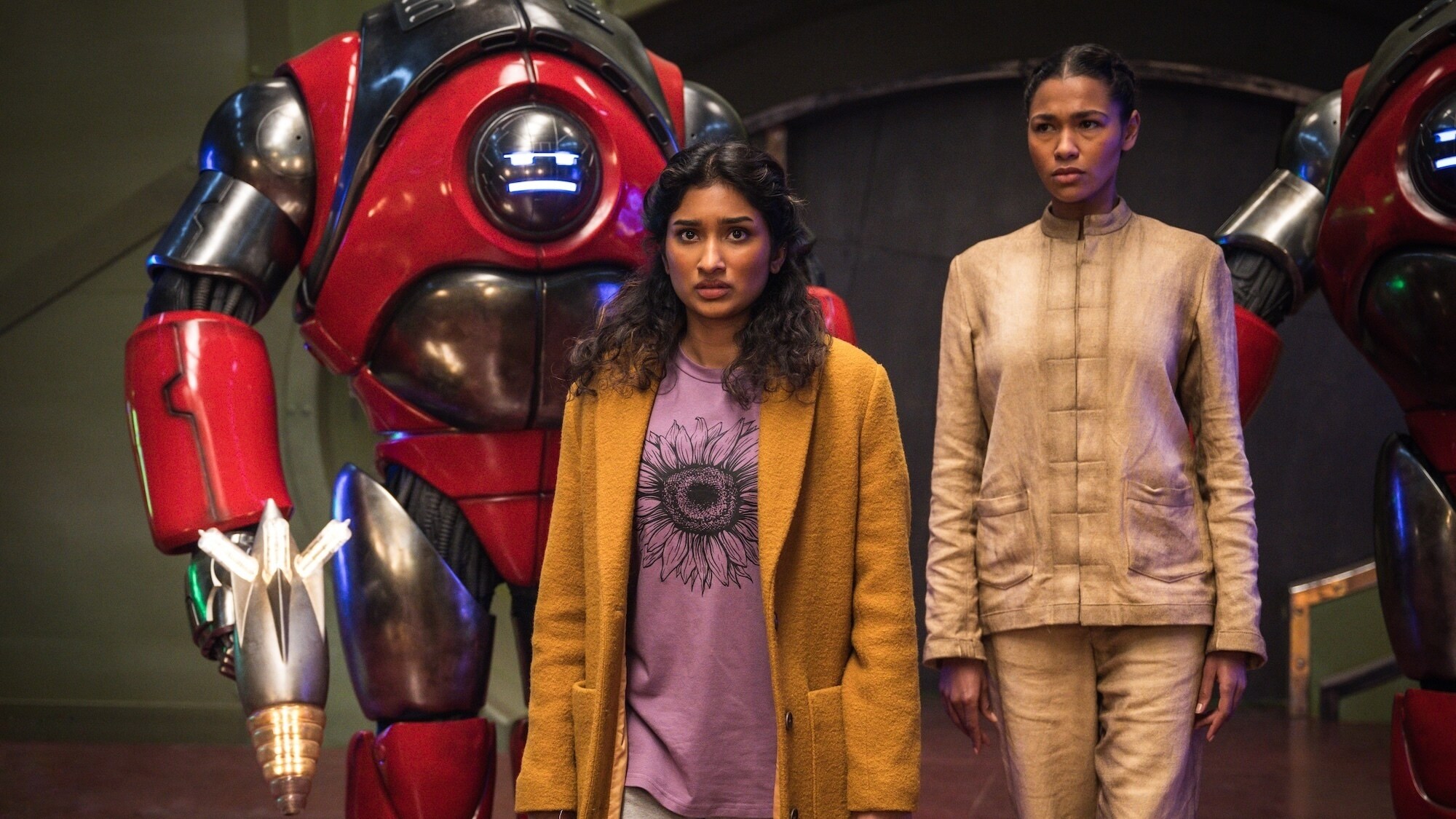
Indeed, we only get the briefest glimpse of Belinda’s everyday life before she’s whisked off on her first outer space adventure. She’s a caring but overworked nurse.1 She lives in disharmony with two ornery roommates. Her parents are alive, although we don’t really know anything about them. And 17 years ago, she had a Nice Guy boyfriend who named a star after her, which is what causes two giant robots to come crashing through her front door and take her back as queen of the planet Missbelindachandra One.
Really, though, most of what we learn about Belinda comes from how she handles herself in an intergalactic crisis. She speaks her mind, but also knows how to keep her cool when she’s being kidnapped. She takes it in stride when she learns Missbelindachandra One is run by robot overlords who are violently squashing a human rebellion. And she’s smart enough to pick up on the Doctor’s every-ninth-word secret code. There’s a bit of Martha and Yaz practicality to her, tempered by a dash of Donna and Amy sass. But Belinda doesn’t fully snap into focus as a character until the Doctor takes her down to the underground tunnels the rebels are using as a makeshift hospital.
Despite everything she’s been through, she immediately jumps in to help where she can. She switches out IV bags and resets a dislocated shoulder without batting an eye at the alien biology around her. Unlike companions who passively follow the Doctor’s lead during their first adventure, Belinda is adamant about speaking and acting for herself. “Some things don’t change,” she snarks. “There’s always a doctor standing back while the nurses do all the hard work.”

Where Ruby was a bright-eyed 19-year-old looking for adventure and connection, Belinda is an independent woman in her 30s who wants to be in control of her own life. There are still moments of whimsy, like when she excitedly listens to the Doctor’s double heartbeat. But Belinda isn’t immediately swept off her feet by the dashing Time Lord. In fact, during her first encounter with the Doctor, she watches as he promises to take rebel Sasha 55 (Evelyn Miller) to the stars only to let her die instead. That leaves her skeptical of him in a way we haven’t really seen since Donna in “The Runaway Bride.”
It's a fascinating character sketch that unfortunately winds up getting bogged down by an overstuffed plot. Though the sci-fi ideas at play in “The Robot Revolution” aren’t that complicated, there’s still a lot to keep track of. That starts with the idea that there’s a Time Fracture between Earth and Missbelindachandra One. The Doctor tries to follow Belinda there, only to wind up arriving six months before her. That’s also how Belinda’s creepy ex Alan Budd (Jonny Green) got kidnapped 10 years earlier to start this entire robot/human conflict in the first place (hello Bootstrap Paradox). And there’s technically still a dangling mystery too, as the entire Missbelindachandra One society was founded by robots who came across Belinda’s “star diploma” in the future and accidentally brought it back 5,000 years, where it became the planet’s foundation myth. As the episode ends, the diploma is still in the Doctor’s possession, so where and how the robots get it from him will presumably be a plot point this season.
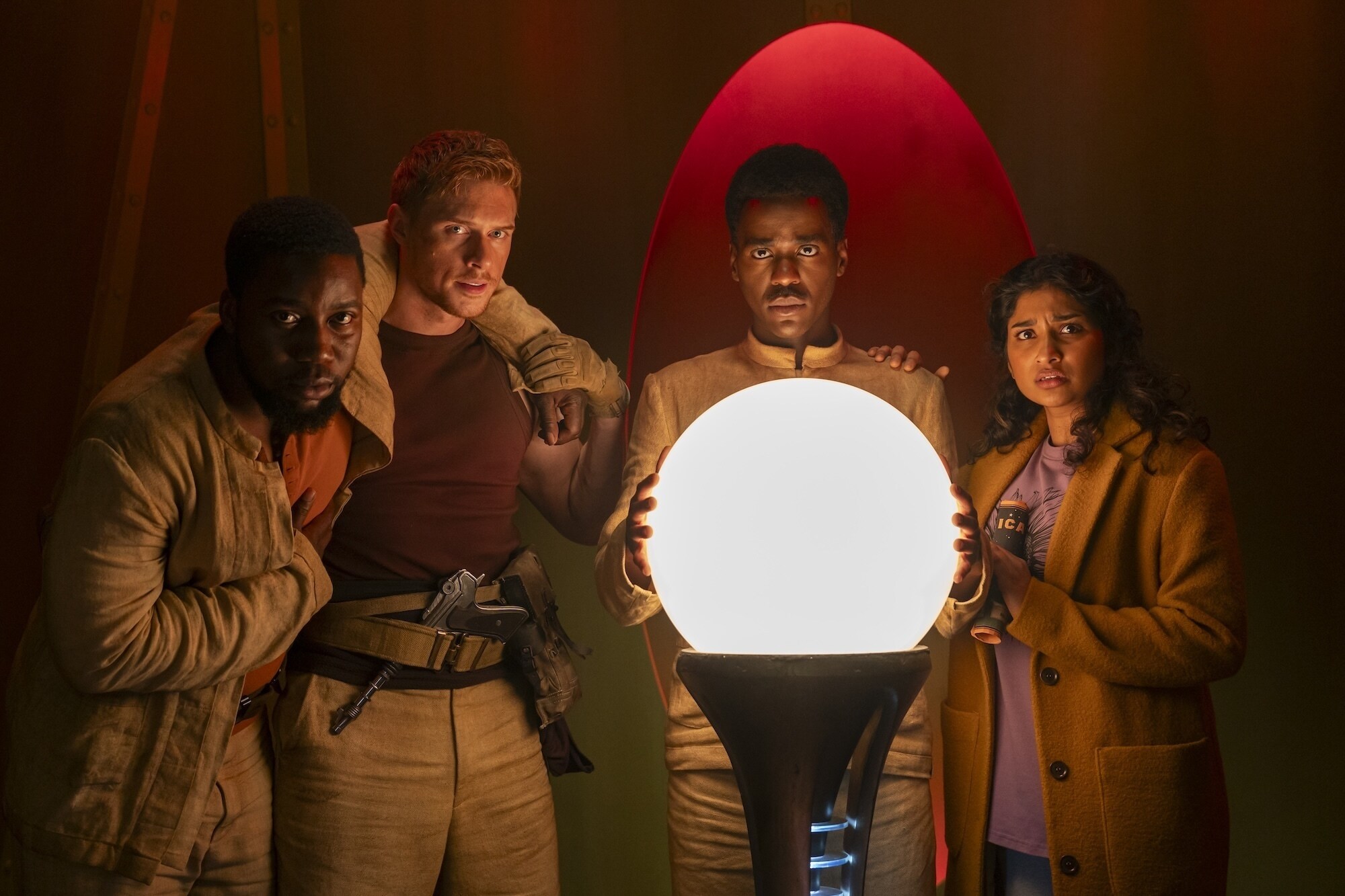
On top of that there’s also the incel commentary, which would be fine and funny in a regular episode but is yet another thing to take in here. The reveal that Alan is the one running the AI (actually “AL”) is a decent twist, but I’m a little confused about how much agency he has on Missbelindachandra One. Did he genuinely think he was in a video game and people weren’t actually getting killed? Or is he a full-on psychopath? And is he still in control once he fuses with the machines? Or is he trapped inside asking for help every ninth word?
I appreciate Davies’ corny but earnest desire to inject some progressive social commentary into Doctor Who (this week’s buzzword is “coercive control”). And Alan reverting to a sperm and egg only to get vacuumed up by a robot was darkly funny, as was Belinda calling Missbelindachandra One “planet of the incels.” But it all winds up feeling a bit fuzzy and muddled where it should be sharp and specific.
Still, I could maybe roll with all of that if this episode didn’t also introduce yet another throughline that frames Belinda as a mystery to solve. First, there’s the question of who pointed the Doctor towards Belinda in the first place. Even before she was kidnapped, he was already looking for her because, as he puts it, “I was told about you by someone. It’s kind of a long story and I’ve got to be careful about timelines, but he told me your name like it would be important.”
Then there’s the trippy moment where a timey wimey explosion sends the Doctor up and down Belinda’s timeline, which mostly seems to be there to explain why Sethu played another character in “Boom” last year but also seems to involve him holding her as a baby. Then there’s the reveal that Earth has somehow exploded or vanished on the day she wants to return to (May 24, 2025—the date the penultimate episode of the season airs). And don’t forget about Mrs. Flood ominously hanging out as Belinda’s nosey neighbor, which seems to suggest she’s been tracking the Doctor’s companions even before he meets them.
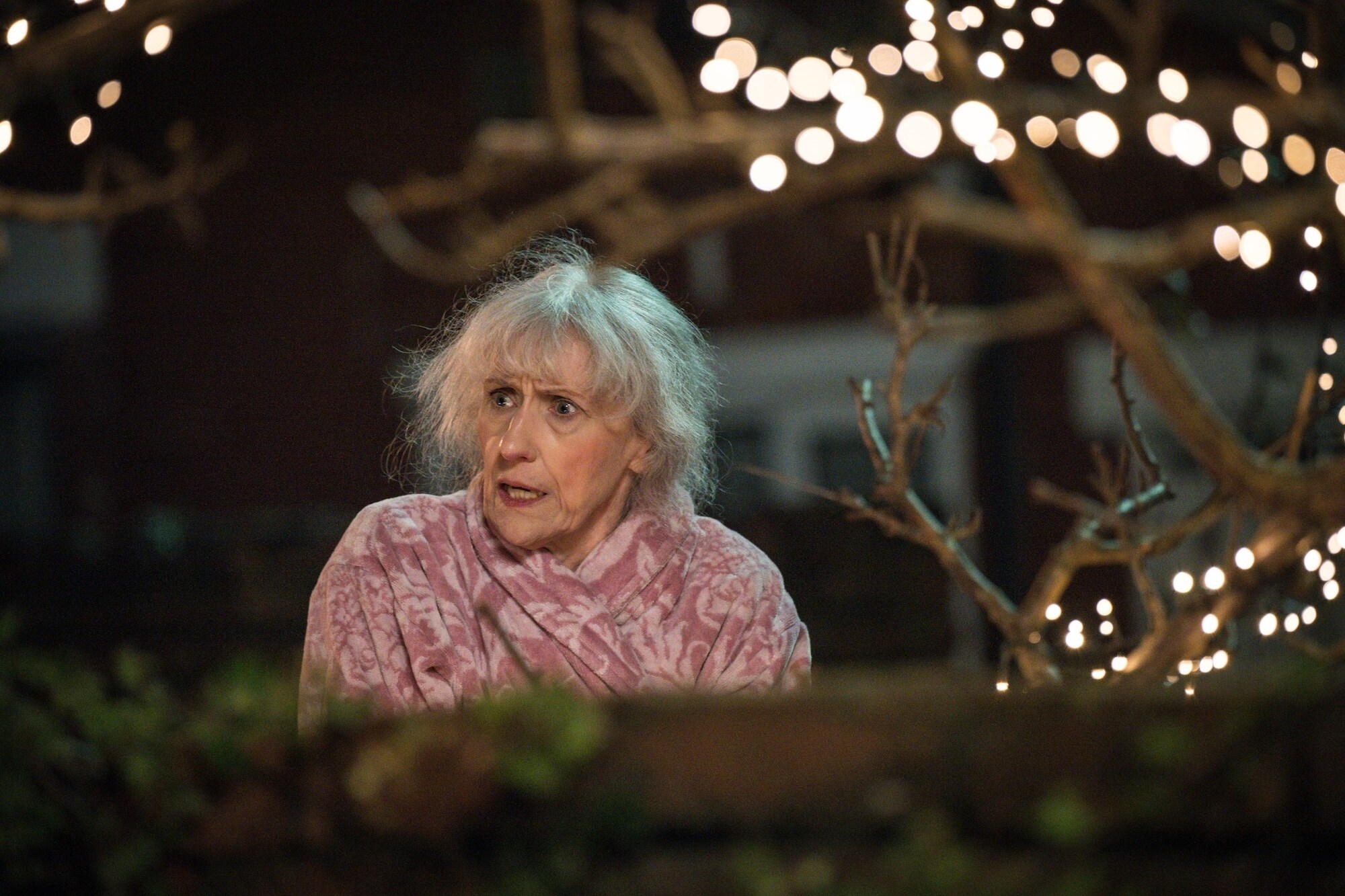
Again, it’s just a lot to take in, and given how unevenly the show has pulled off the “companion as mystery” thing with Clara and Ruby, I’m nervous about what we’re in store for here. I actually loved the idea that the Doctor wanted to travel with Sasha and saw Belinda as more of a case-of-the-week MacGuffin he got stuck with. But now that the Doctor has downloaded Belinda’s backstory and woven himself into her history, that part of the set-up doesn’t seem to be at play anymore. Still, at least we get a fascinating new wrinkle with Belinda as a skeptical, self-possessed companion who doesn’t necessarily want to travel with the Doctor. I love how she calls him out for testing her DNA without her permission and spots his “we’re meant to be connected” speech as a sales pitch, which is the sort of breaking point it takes a lot of companions much longer to reach.
Indeed, maybe the best way to describe “The Robot Revolution” is that it feels like a companion’s first and second episodes crammed into one, with less time for the slower character beats we usually get in those initial adventures. (Think “The Bells of Saint John” and “The Rings of Akhaten” or “Rose” and “The End of the World” in just 48 minutes.) Once upon a time, we used to get 13 episodes of Doctor Who a season, but now we’re down to just 8 and the cracks are starting to show. Last season, Davies eased us into Ruby’s introduction only to rush her departure. This time around, he seems to be taking the opposite approach with Belinda. Perhaps it’s a choice that will pay dividends down the road. But, for now, “The Robot Revolution” is a rather frenetic, if still promising, intro to a new era of Who.
Stay observations
Welcome back to our coverage of Doctor Who! The show is in a bit of a weird spot these days, with a third Ncuti Gatwa season still yet to be officially commissioned by Disney+ and rumors swirling about what the show’s future will look like. Still, this is one of my favorite shows to watch/write about and I’m thrilled to be back in the TARDIS less than a year after last season.
This isn’t my favorite episode visually (the robot planet stuff is all a bit silly), but I liked the trippy prism effect they use to show the Time Fracture “schwup” in action. And it was fun to see the show try something different with the retro, color-shifting sequence that moves Belinda and Alan up and down in age.
This is the first time the Doctor and companion have both been people of color, which is a great, overdue bit of TARDIS history making!
The Fifteenth Doctor may not have one signature outfit, but he feels defined by long, flowy silhouettes made of structured fabrics. I thought his striped navy skirt set was a perfect continuation of that aesthetic.
Alan and Belinda’s teenage kiss is so hilariously awkward. I’m impressed the actors could keep a straight face while they did it.
Maybe it’s just a common British home layout, but Belinda’s house looks so much like Donna’s house from the recent specials.
After that great “Can’t Get You Out of My Head” needledrop in “Rogue,” we get a “Padam Padam” reference here. I love how much Davies continues to love Kylie Minogue.
I feel like the show put a real focus on hot, sleeveless rebel Manny (Max Parker), to the point where I’m wondering if he’s coming back this season.2
“Time detective” is actually a pretty good job description for the Doctor!
“Apparently I’m the queen of outer space, if you can tell the police.”
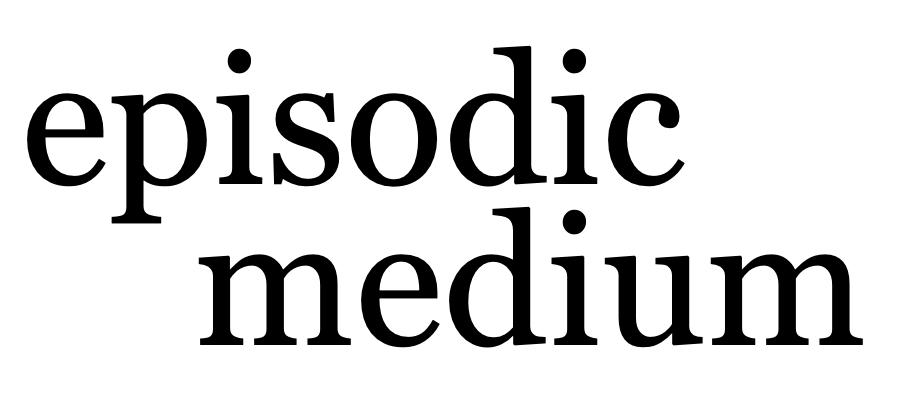
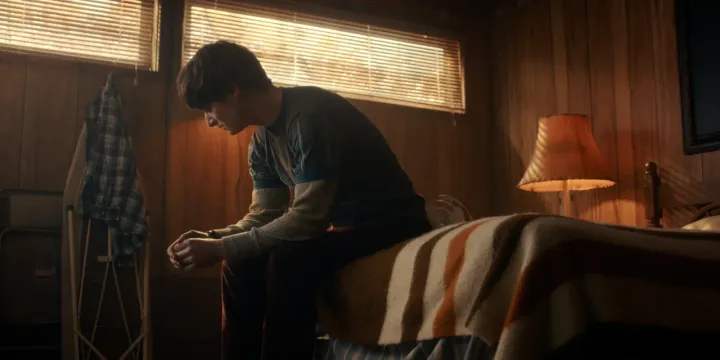
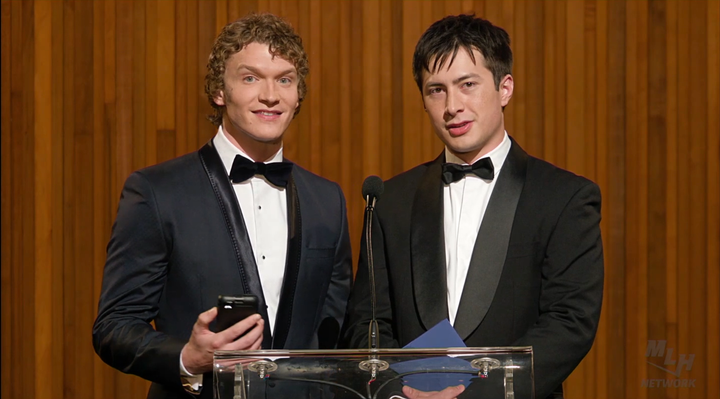

Comments ()